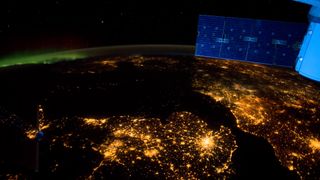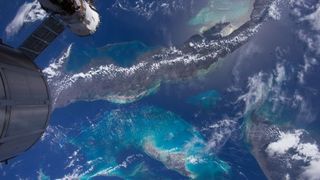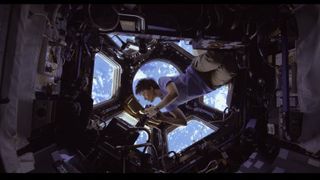Forget Gravity, this IMAX movie was filmed in space for real
We sat down with Toni Myers to discuss the challenges of filming her most ambitious documentary yet

It was the actor WC Fields who famously cautioned filmmakers to "never work with animals or children", but after speaking with Toni Myers, director and editor of the new IMAX space documentary A Beautiful Planet, we're tempted to update Fields' advice by adding "or film your movie in space".
A Beautiful Planet was shot on – and from – the International Space Station, by its crew. And shooting an entire documentary 250 miles above the surface of the earth brought with it more than a couple of challenges that we're betting even David Attenborough has never had to deal with.
Despite this, A Beautiful Planet ends up having production values every bit as good as any documentary shot safely on the ground.

And it's hard not to agree that the results ended up being worth the effort. Shots of the Himalayas from almost 245 miles above the summit of Mount Everest are phenomenal in their clarity, and a sequence featuring the Californian coast makes the state's biggest mountains look as small as ripples of ice cream.
A Beautiful Planet aims to make us take more notice of the damage we as a species are wreaking upon our home. Ironically, it doesn't do this by making our planet feel huge and majestic, but instead – much like the iconic 'earthrise' image shot by the astronauts of Apollo 8 – makes it feel small, and, more importantly, vulnerable.
Radioactive cameras
The final footage may have turned out well, but this was never a guarantee. After all, no one, not even Myers, knew how the cameras would cope with the extreme conditions of space.
For Hubble 3D, a previous film of Myers', the team sent two Canon G1s up on the same flight for the interior shots. One camera was fine, and was operational for several months without incident, while the footage from the other was riddled with imperfections from the first day.
Get daily insight, inspiration and deals in your inbox
Get the hottest deals available in your inbox plus news, reviews, opinion, analysis and more from the TechRadar team.

All the Beautiful Planet team could do was pick their equipment wisely. This meant stress-testing it while still on the ground to see how it would deal with the radiation of space. "We baked them with enough radiation to kill anything in a minute," Myers says, and then the team picked the devices that held up the best.
Eventually two digital cameras were selected for filming: a Canon 1D C which was used for the exterior shots of the ISS, and a Canon C500 for the interior.
No camera will work perfectly in space, but by carefully selecting their equipment the team could minimise the pixel damage on the chips to an amount that could be reasonably corrected in post-production.
Remote directing
These challenges would be difficult enough to overcome if the director had access to the equipment – but Myers spent the entire time directing proceedings from her home in Northern Ontario, while the crew themselves filmed the majority of the footage hundreds of miles overhead.
Thankfully, a combination of excellent cell phone reception and the wonders of digital film meant the crew could keep in constant communication with Myers over the 15-month filming period.

"We tended to get cell phone calls when they wanted to discuss something," says Myers. "It was never a malfunction, it was just "What do you think about shooting something like this?" that we hadn't discussed ... so we had that and then ... we'd say "Go try it, that would be great", and then I'd get the shot in a couple of days".
The footage was transmitted via Jonathan Space Centre to Myers' home, and would end up in powerpoint presentations covered in what Myers calls "nasty arrows pointing to things I didn't like" which would then get beamed back to the space station as feedback.
Jon Porter is the ex-Home Technology Writer for TechRadar. He has also previously written for Practical Photoshop, Trusted Reviews, Inside Higher Ed, Al Bawaba, Gizmodo UK, Genetic Literacy Project, Via Satellite, Real Homes and Plant Services Magazine, and you can now find him writing for The Verge.
Most Popular



